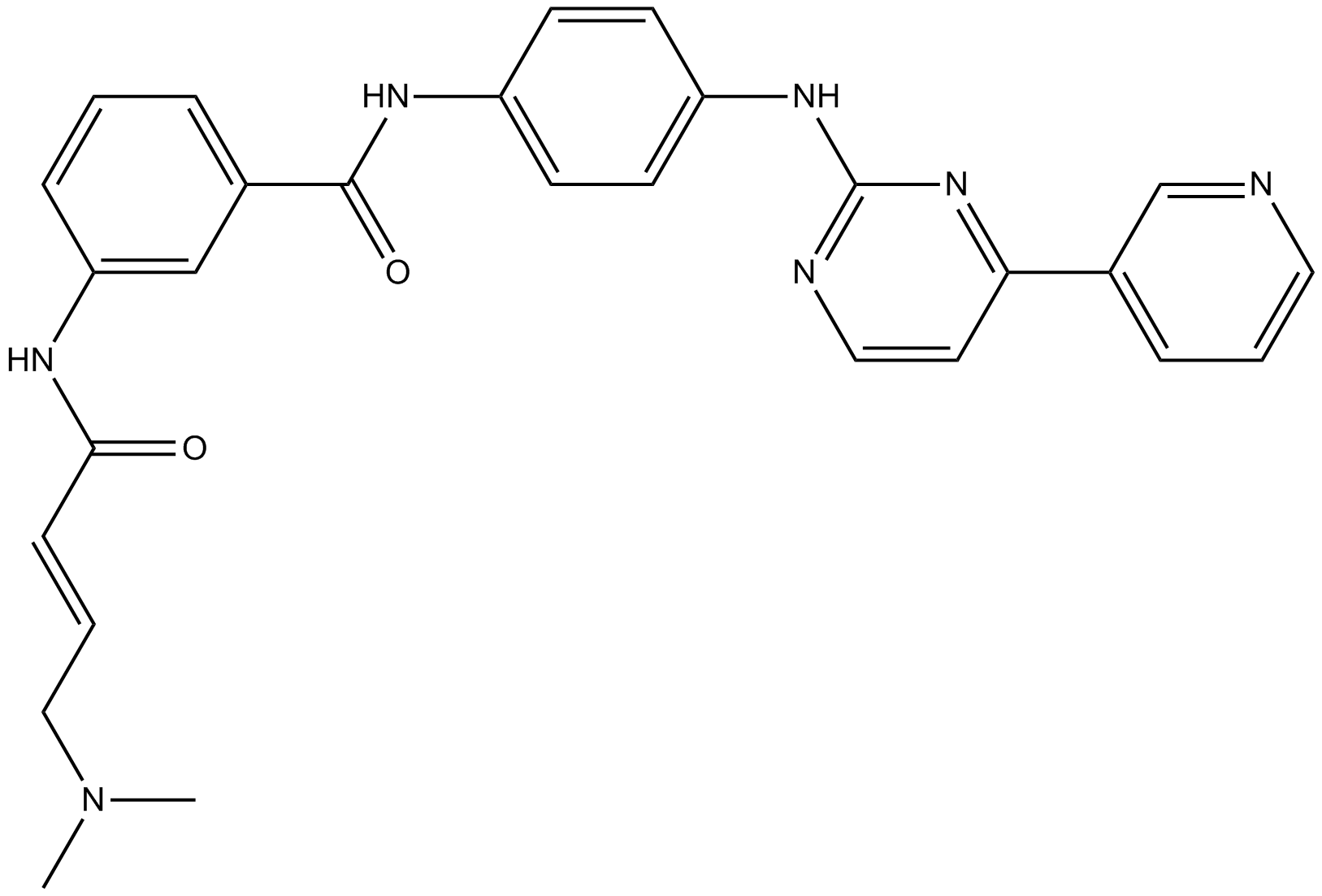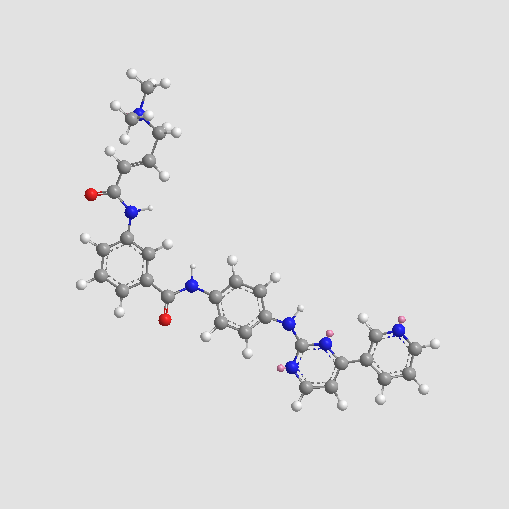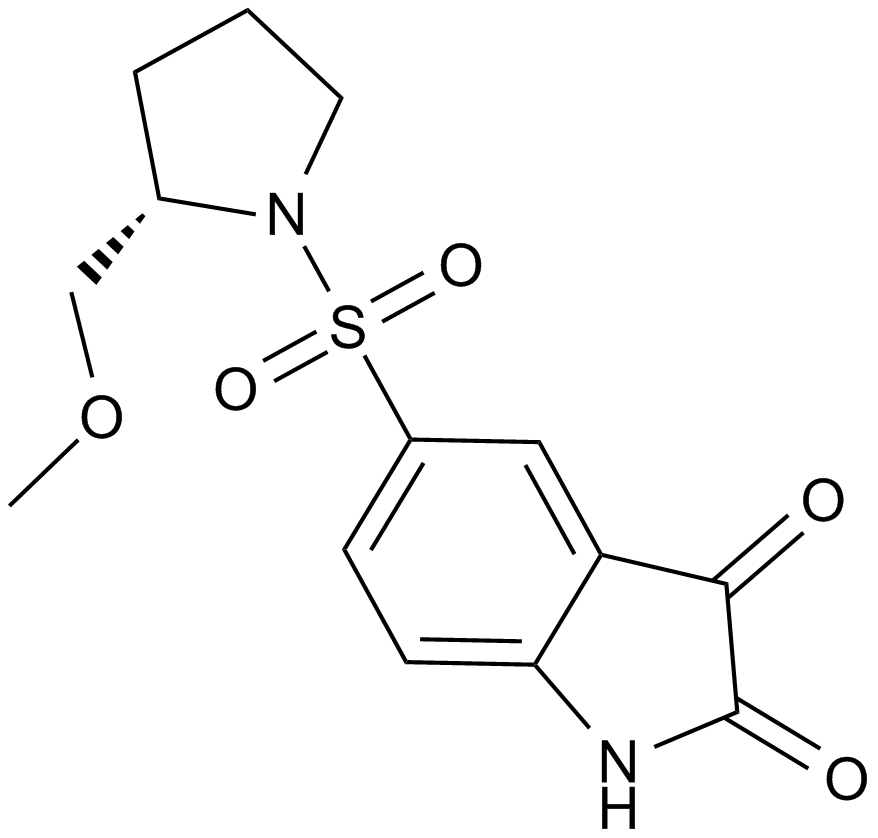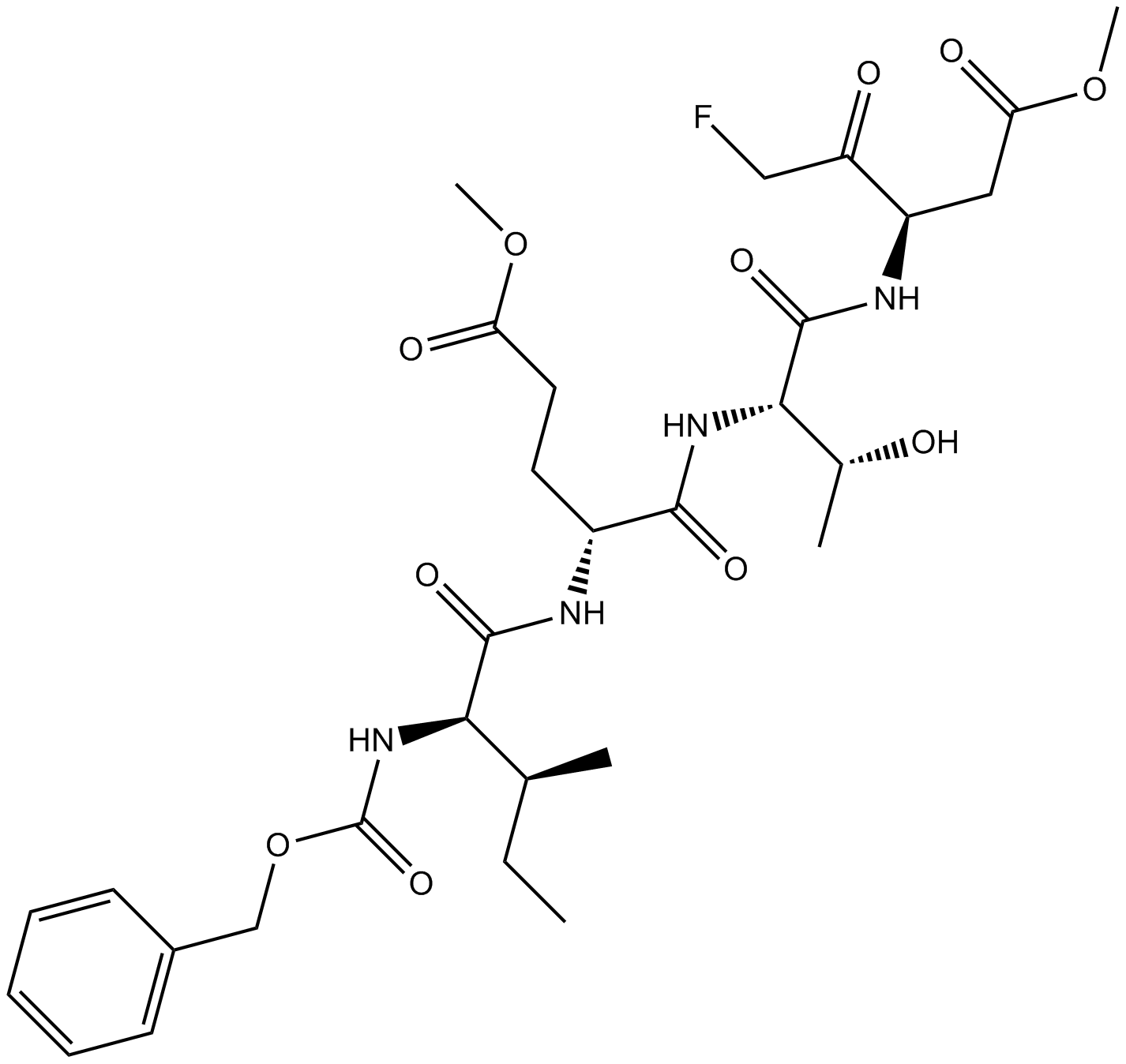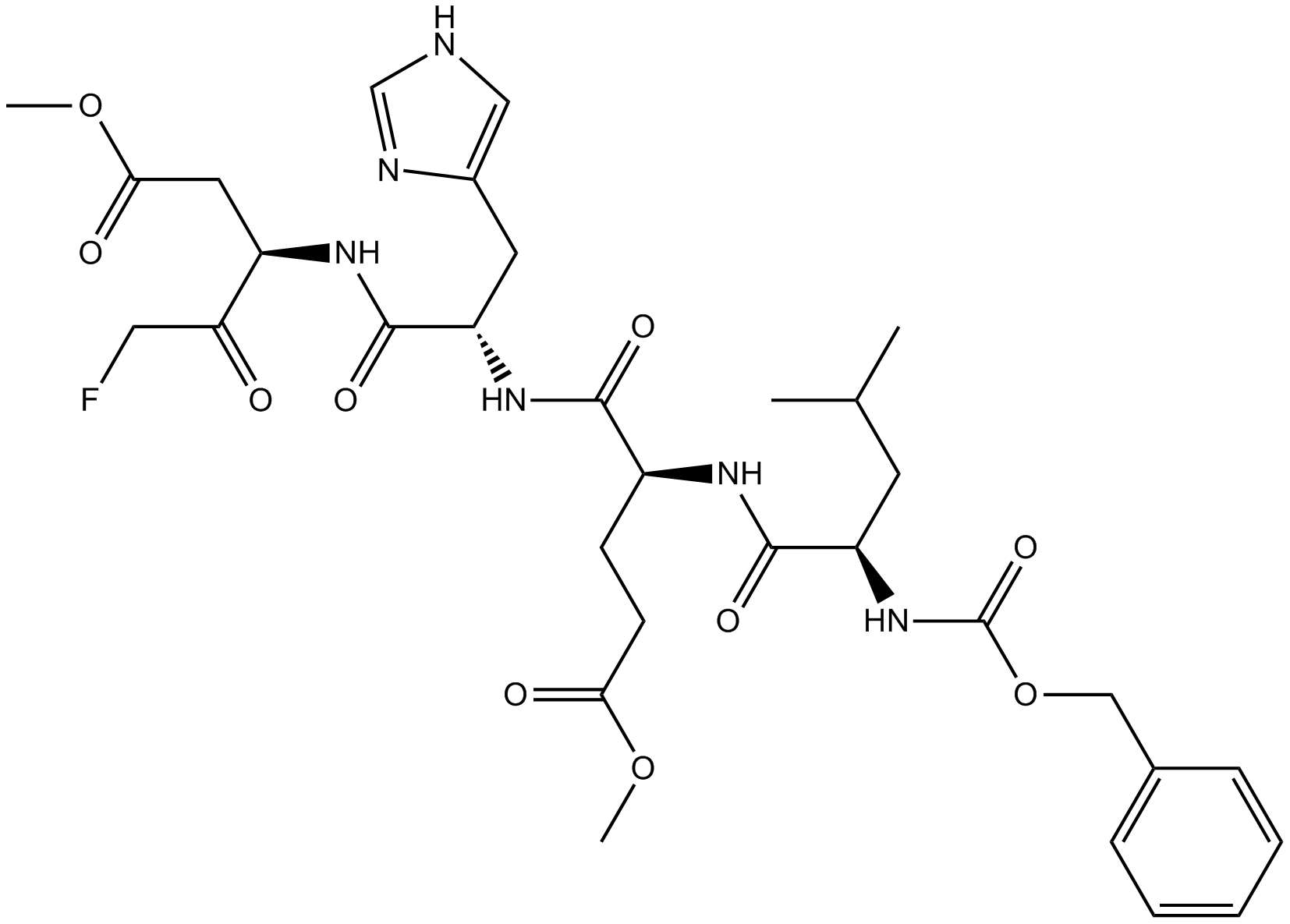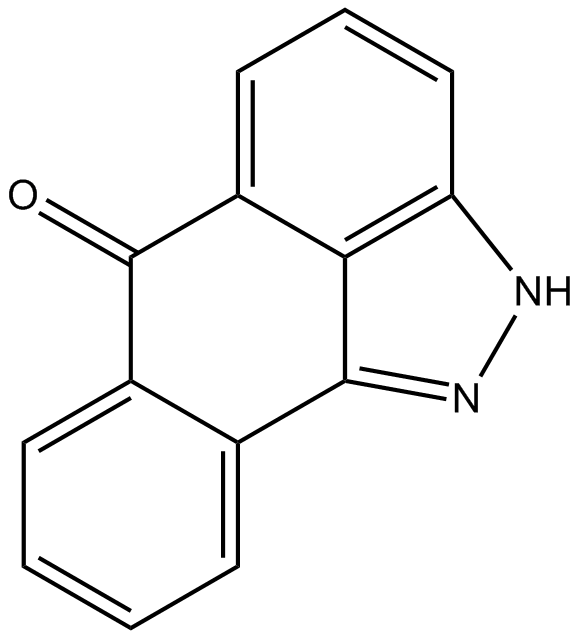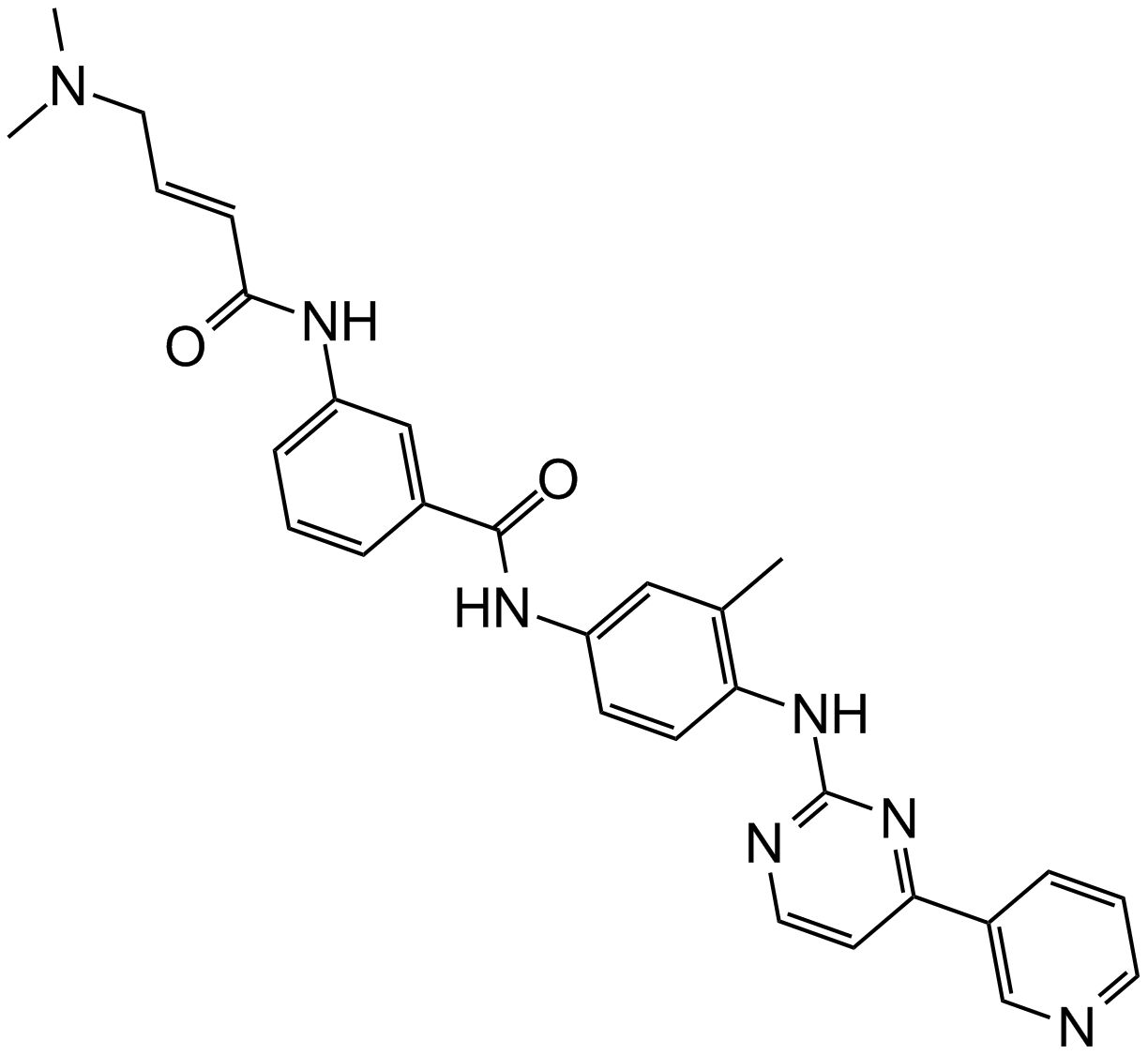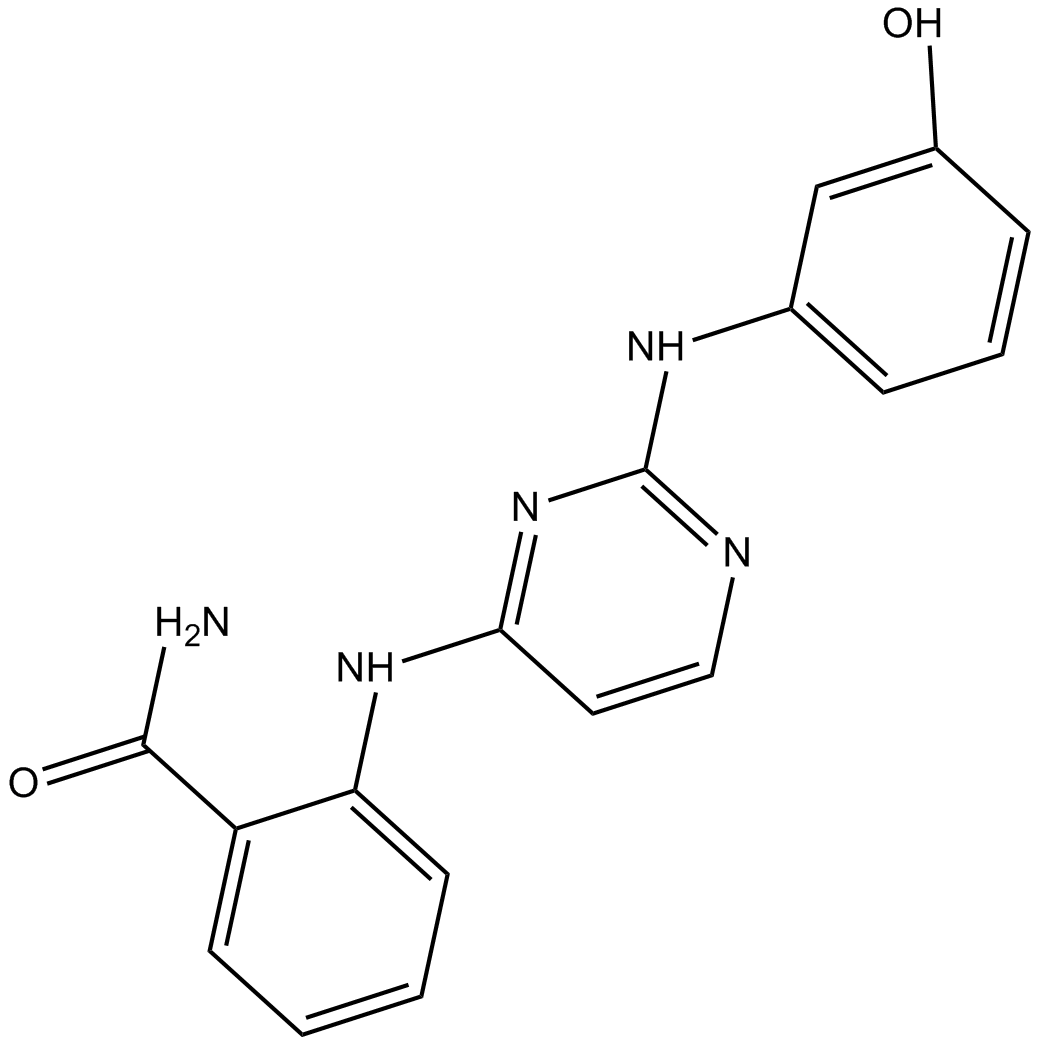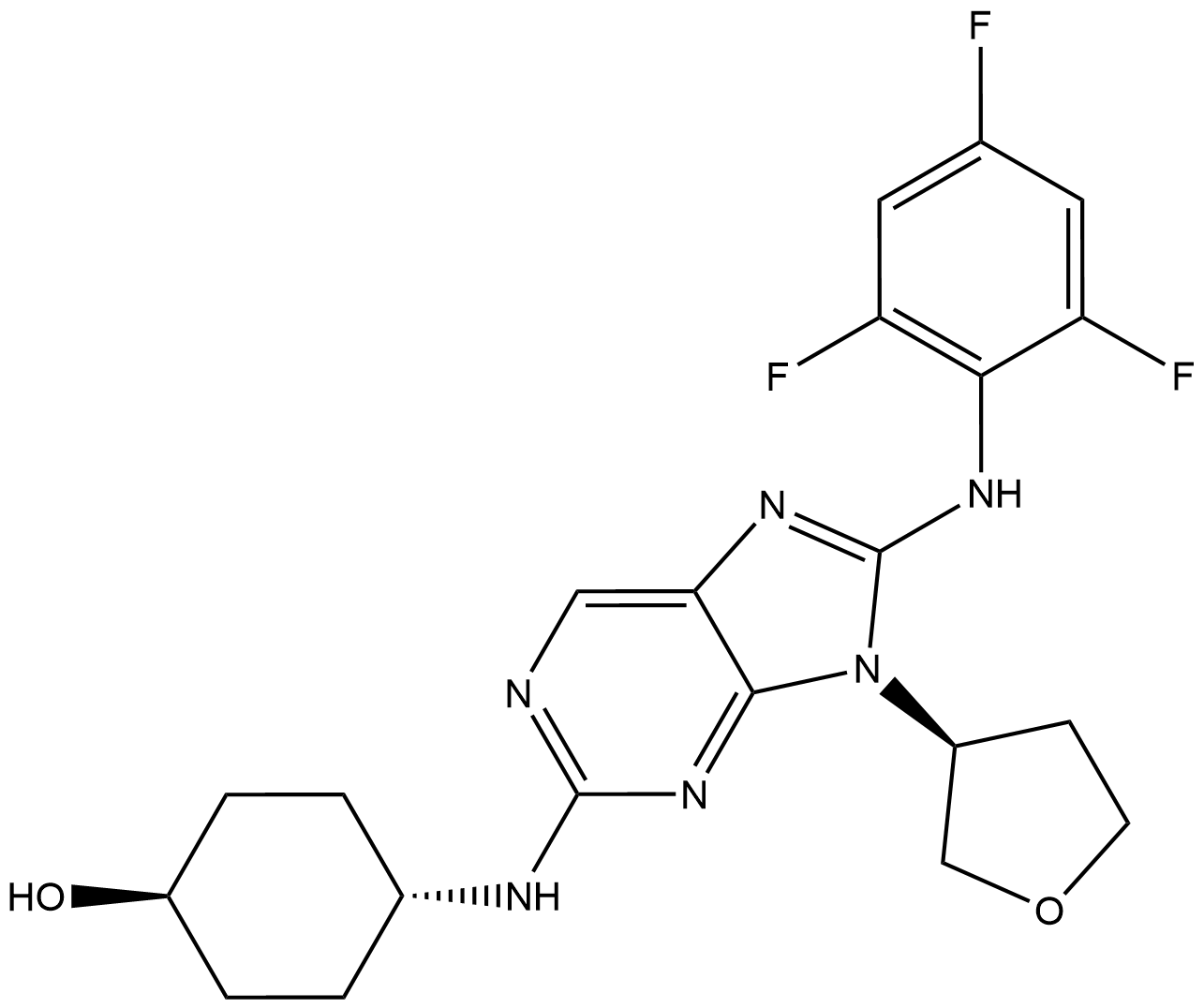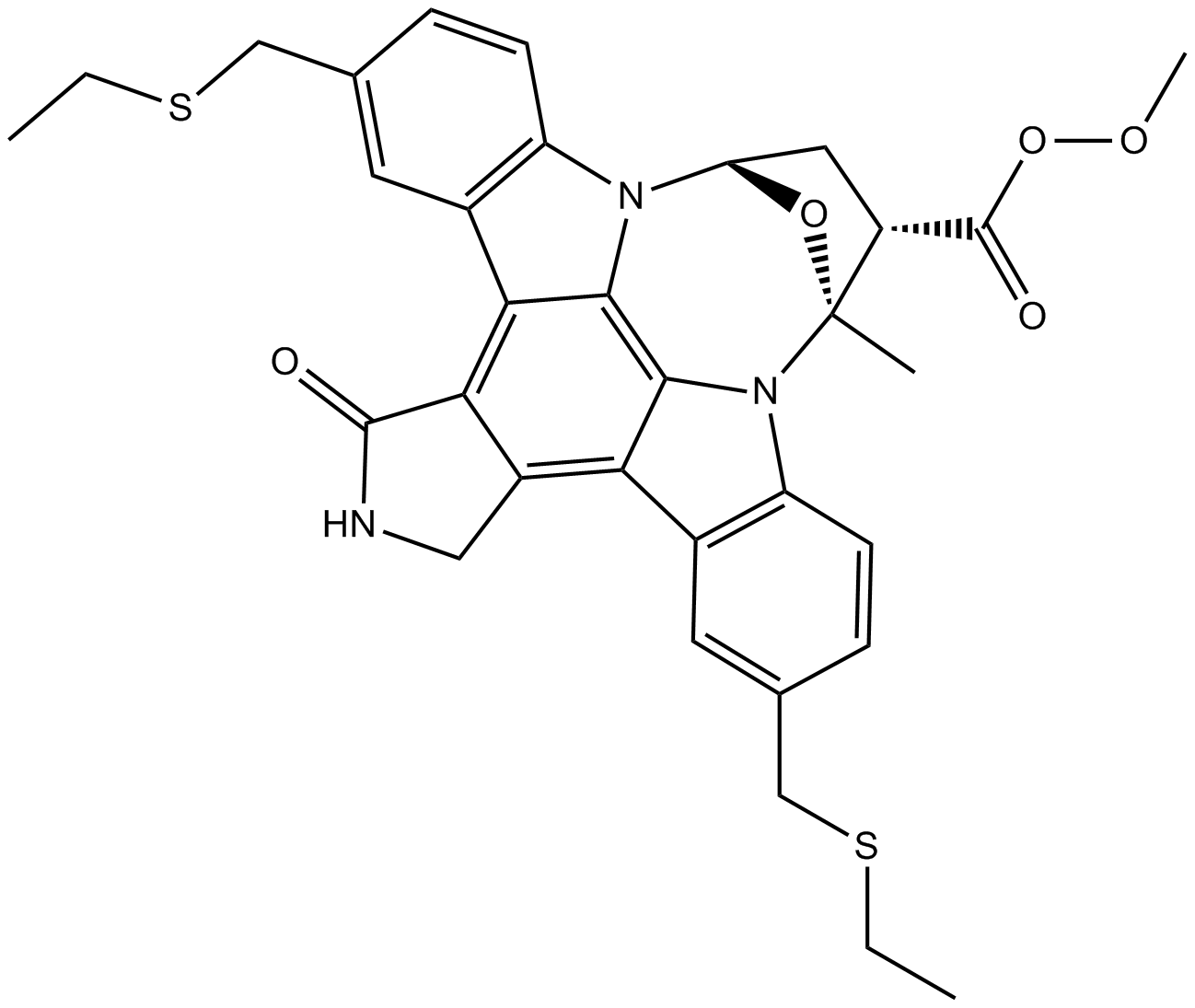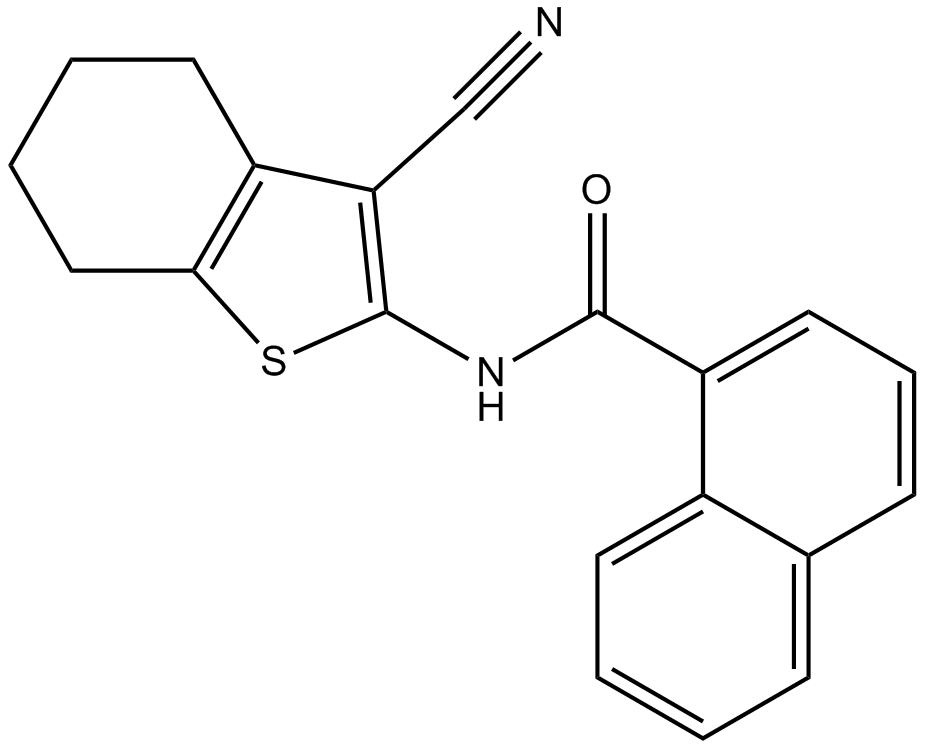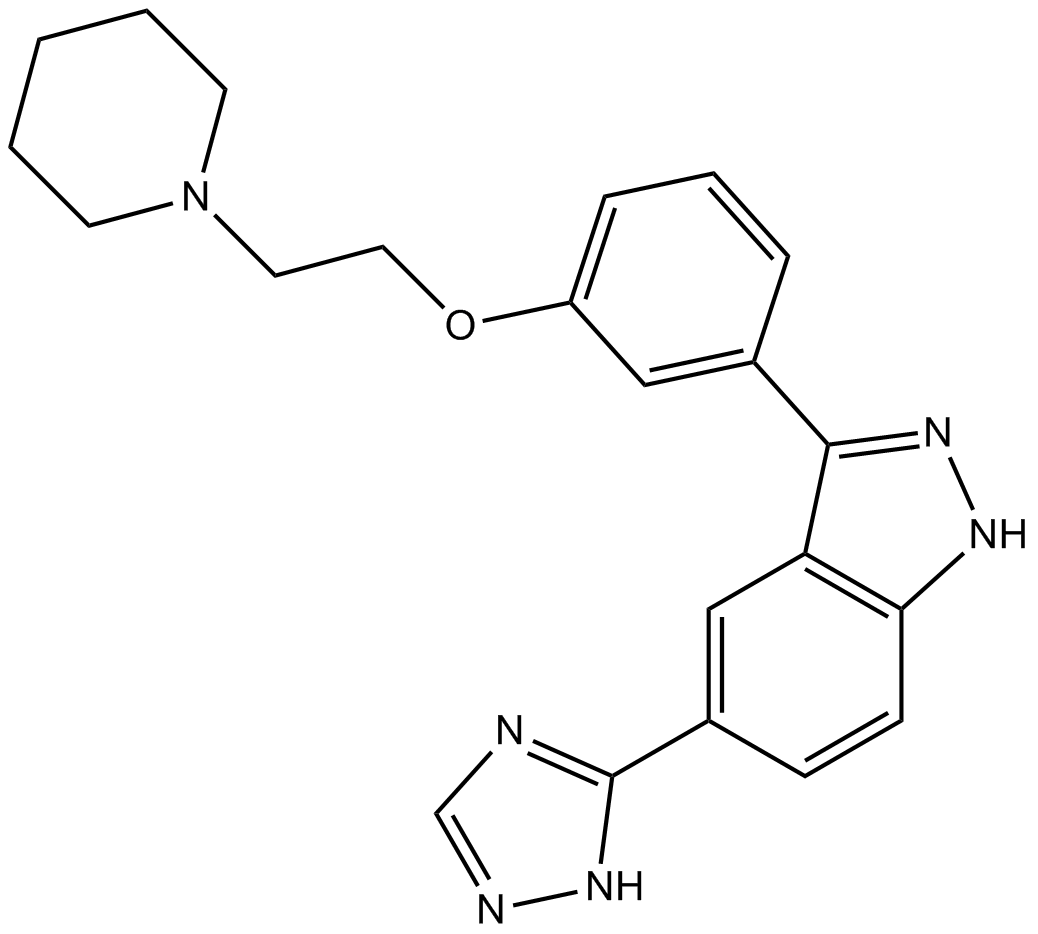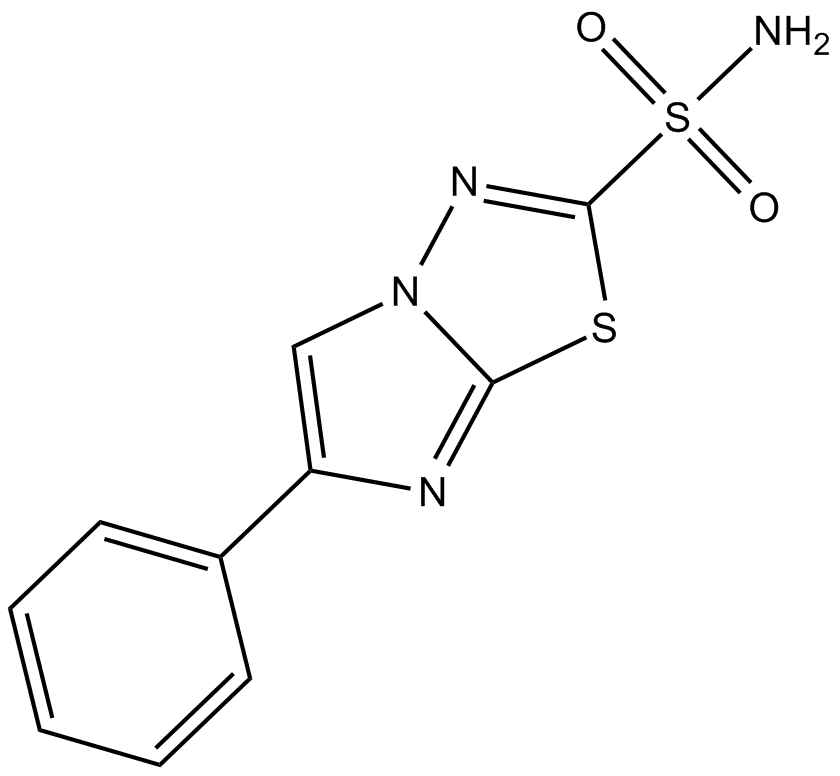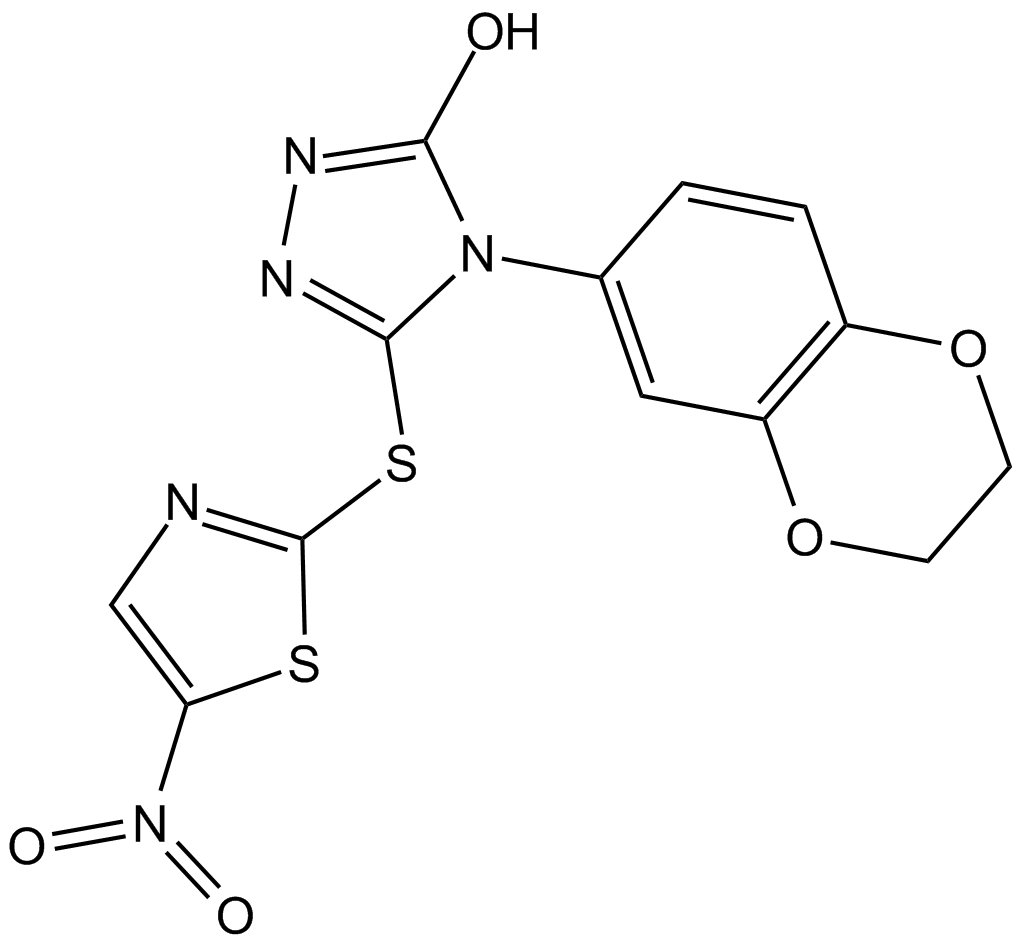JNK-IN-7
JNK-IN-7 is a selective JNK inhibitor with IC50 values of 1.54 nM, 1.99 nM, 0.75 nM to JNK1, JNK2, JNK3, respectively. It also inhibits phosphorylation of c-Jun, which is a direct substrate of JNK kinase.
JNK-IN-8, an analog of JNK-IN-7 with an extra flag methyl, dramatically improved in selectivity and eliminated binding to IRAK1, PIK3C3, PIP4K2C and PIP5K3, comparing to JNK-IN-7. JNK-IN-7 and JNK-IN-8 require Cys116 for JNK2 inhibition. JNK-IN-7 can indeed inhibit IRAK-1 dependent E3 ligase activity of pellino, which plays an role in the Toll receptor signaling pathway in cells at relative high compound concentrations (1–10 mM).
The IRAK1 inhibitor JNK-IN-7 inhibited the IL-1-stimulated activation of Pellino 1 in IL-1R cells, but not the Pam3CSK4-stimulated activation of Pellino 1 in RAW264.7 macrophages. JNK-IN-7 also suppressed the phosphorylation of c-Jun in Pam3CSK4-stimulated RAW macrophages, but in contrast with IL-1R cells it did not affect the activation of Pellino 1.
References:
[1]. Zhang T, Inesta-Vaquera F, Niepel M et al. Discovery of potent and selective covalent inhibitors of JNK. Chem Biol. 2012 Jan 27;19(1):140-54.
[2]. Goh ET, Arthur JS, Cheung PC et al. Identification of the protein kinases that activate the E3 ubiquitin ligase Pellino 1 in the innate immune system. Biochem J. 2012 Jan 1;441(1):339-46.
| Physical Appearance | A solid |
| Storage | Store at -20°C |
| M.Wt | 493.56 |
| Cas No. | 1408064-71-0 |
| Formula | C28H27N7O2 |
| Synonyms | JNK inhibitor |
| Solubility | ≥24.7 mg/mL in DMSO; insoluble in H2O; insoluble in EtOH |
| Chemical Name | 3-[[(E)-4-(dimethylamino)but-2-enoyl]amino]-N-[4-[(4-pyridin-3-ylpyrimidin-2-yl)amino]phenyl]benzamid |
| SDF | Download SDF |
| Canonical SMILES | CN(C)CC=CC(=O)NC1=CC=CC(=C1)C(=O)NC2=CC=C(C=C2)NC3=NC=CC(=N3)C4=CN=CC=C4 |
| Shipping Condition | Small Molecules with Blue Ice, Modified Nucleotides with Dry Ice. |
| General tips | We do not recommend long-term storage for the solution, please use it up soon. |
| Kinase experiment [1]: | |
|
Cell-Based assays for c-Jun phosphorylation |
The cell-based kinase assays for c-Jun phosphorylation were carried out by using the LanthaScreen c-Jun (1 ~ 79) HeLa cell lines which stably expressed GFP-c-Jun 1 ~ 79 and GFP-ATF2 19 ~ 106, respectively. Phosphorylation was determined by measuring the TR-FRET between a terbium-labeled phospho-c-Jun specific antibody and GFP. The cells were plated in white tissue culture treated 384 well plates at a density of 10,000 cells per well in 32 μL assay medium (Opti-MEM, supplemented with 0.5% charcoal/dextran-treated FBS, 100 U/mL Penicillin, 100 μg/mL Streptomycin, 0.1 mM nonessential amino acids, 1 mM sodium pyruvate, 25 mM HEPES [pH 7.3] and lacking phenol red). After overnight incubation, cells were pretreated for 90 mins with JNK-IN-7 (at indicated concentration) diluted in 4 μL assay buffer followed by 30 mins of stimulation with 5 ng/mL of TNF-α in 4 μL assay buffer (final assay volume was 40 μL). The medium was then removed by aspiration and the cells were lysed by adding 20 μL of lysis buffer (20 mM Tris-HCl [pH 7.6], 5 mM EDTA, 1% Nonidet P-40 substitute, 5 mM NaF, 150 mM NaCl and 1:100 protease and phosphatase inhibitor mix, P8340 and P2850, respectively). The lysis buffer included 2 nM of the terbium-labeled anti-c-Jun (pSer73) detection antibodies. After allowing the assay to equilibrate for 60 mins at room temperature, TR-FRET emission ratios were determined on a BMG Pherastar fluorescence plate reader using the following parameters: excitation at 340 nm, emission 520 and 490 nm; 100 ms lag time; 200 μs integration time; emission ratio = Em 520/Em 490. All data were analyzed and plotted using GraphPad Prism 4. |
| Cell experiment [2]: | |
|
Cell lines |
Human IL-1R cells and RAW264.7 macrophages |
|
Preparation method |
Soluble in DMSO. General tips for obtaining a higher concentration: Please warm the tube at 37℃ for 10 minutes and/or shake it in the ultrasonic bath for a while. Stock solution can be stored below -20℃ for several months. |
|
Reaction Conditions |
0.1, 1 and 10 mM; 1 hr |
|
Applications |
In human IL-1R cells, JNK-IN-7 inhibited IL-1β-stimulated phosphorylation of c-Jun and the activation of Pellino 1. In Pam3CSK4-stimulated RAW macrophages, JNK-IN-7 also inhibited the phosphorylation of c-Jun. |
|
References: [1]. Zhang T, Inesta-Vaquera F, Niepel M, et al. Discovery of potent and selective covalent inhibitors of JNK. Chem Biol, 2012, 19(1): 140-154. [2]. Goh ET, Arthur JS, Cheung PC, et al. Identification of the protein kinases that activate the E3 ubiquitin ligase Pellino 1 in the innate immune system. Biochem J, 2012, 441(1): 339-346. | |
Quality Control & MSDS
- View current batch:
Chemical structure
